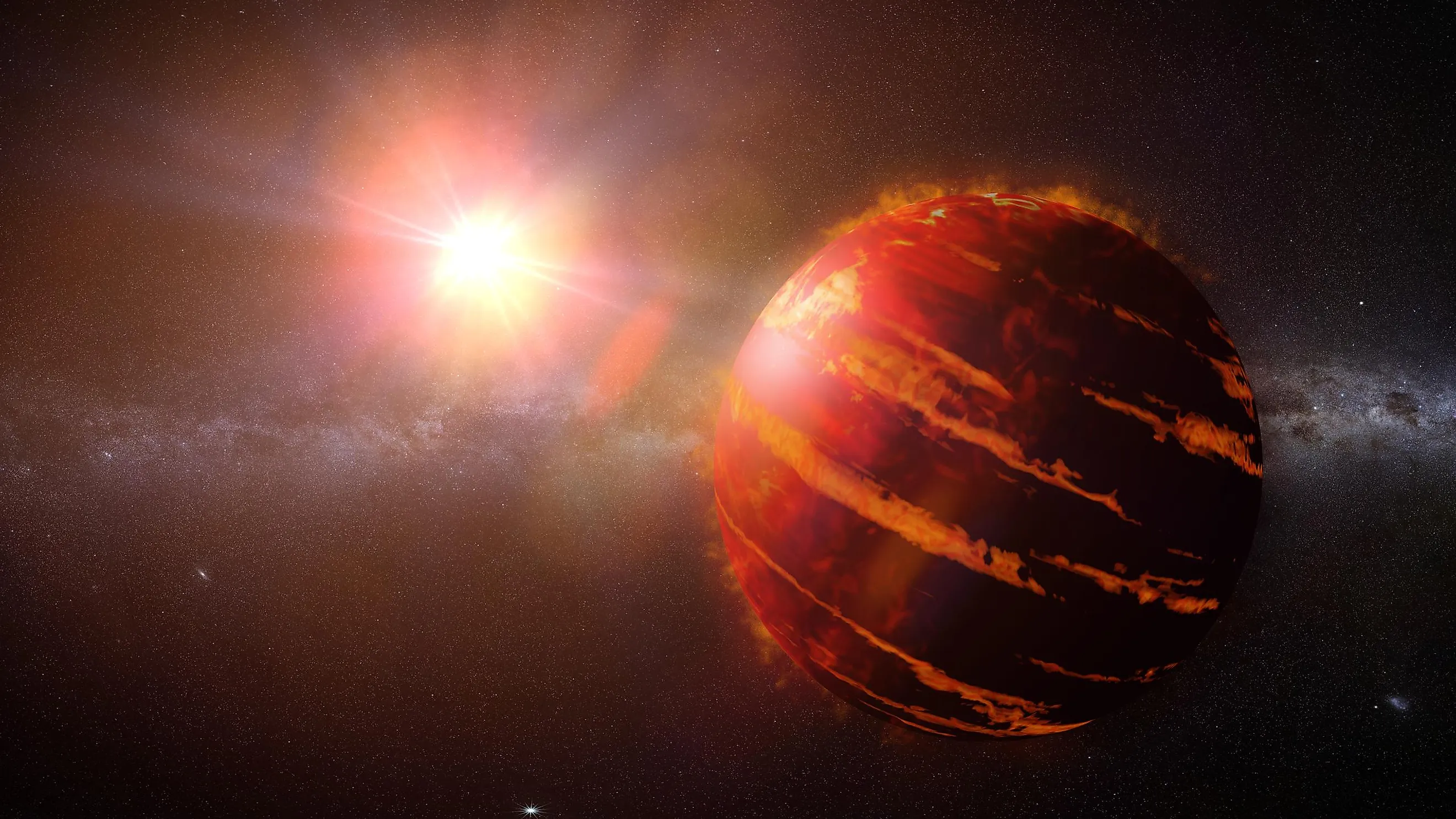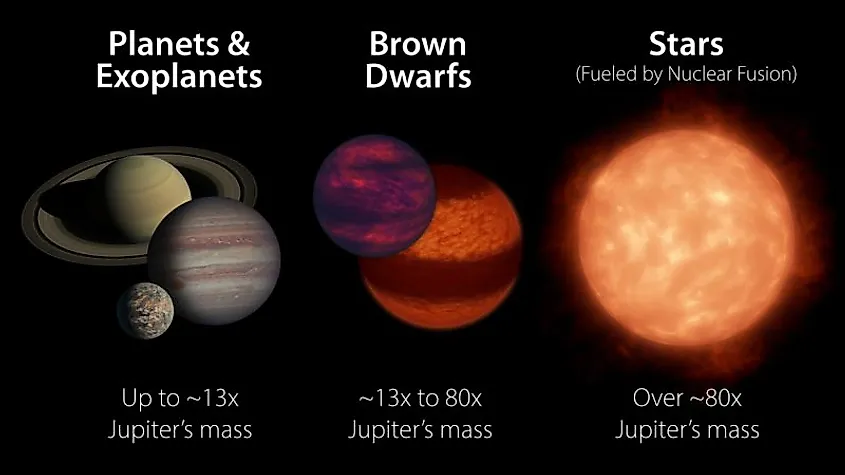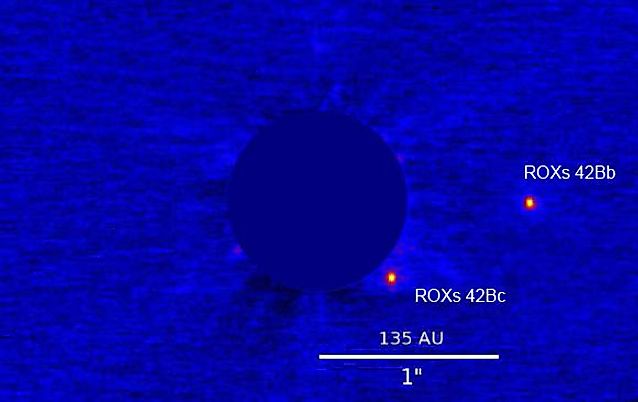
The Largest Planet Ever Found
In our solar system, Jupiter is the largest planet by size, mass, and volume. In fact, Jupiter is more massive than every other planet in our solar system combined. Jupiter has a diameter of 88,695 miles (142,800 kilometers), which is 11 times larger than Earth. By volume, you could fit 1,300 Earths inside Jupiter. These numbers go to show just how large Jupiter is when compared to the other planets in our solar system. However, Jupiter is not the largest planet ever discovered. Rather, scientists have uncovered a number of planets around other stars that exceed Jupiter in both size and mass. The largest discovered as of yet is a gas giant designated as ROXs-42Bb with a mass of 9 Jupiter’s and a radius of 2.5 Jupiters.
Brown Dwarf or Planet?

Determining which exoplanet is the largest one discovered is more difficult than it may seem. It is not as simple as knowing their size and mass since some gas giants may not actually be planets at all. Rather, some of the most massive known exoplanets may be what are called brown dwarfs, which represent objects that are neither star nor planet. Brown dwarfs are the state between planet and star, as they are not small enough to be a planet, but not quite large enough to be a star. The smallest brown dwarfs usually have masses around 13 times larger than Jupiter, yet oddly enough, they can actually be smaller than Jupiter. That’s because their high mass compresses the hydrogen and helium in their atmospheres, causing them to shrink under their own gravity. Some of the largest objects ever discovered around other stars may actually be brown dwarfs rather than planets, and so there is no clear answer as to what exoplanet is truly the largest. In the case of ROXs-42Bb, it is the largest exoplanet whose mass is too small to be a brown dwarf, and although there are larger objects out there around other stars, it remains unknown whether they are planets or brown dwarfs. As of yet, ROXs-42Bb is the only one that can be confidently defined as a true planet and not a brown dwarf.
Characteristics of ROXs-42Bb

ROXs-42Bb orbits a red dwarf star in the constellation Ophiuchus at a distance of 440 light years away. ROXs-42Bb orbits its parent star at an extremely vast distance, and it takes the planet nearly 2,000 years to complete one orbit around its star. Compared to the distance between the Earth and sun, ROXs-42Bb orbits its star 157 times further than the Earth orbits the sun. Interestingly, the vast distance between ROXs-42Bb and its host star suggests that it did not form in a conventional way. In our solar system, the gas giants are believed to have formed from a process called accretion, wherein the formation of solid cores gradually draws in more material, increasing the force of gravity which then draws in even more material. After a few million years, the once small rocky core becomes a gas giant. However, ROXs-42Bb is too far from its star to have formed from accretion, and it may also be too large to form this way. Rather, ROXs-42Bb likely formed in a way similar to how a star forms. That is, through the gravitational collapse of gas and dust that directly led to the planet’s formation. ROXs-42Bb has an estimated mass of 9 Jupiters and a radius of around 2.5 Jupiters, making it the largest planet ever found as of yet.











